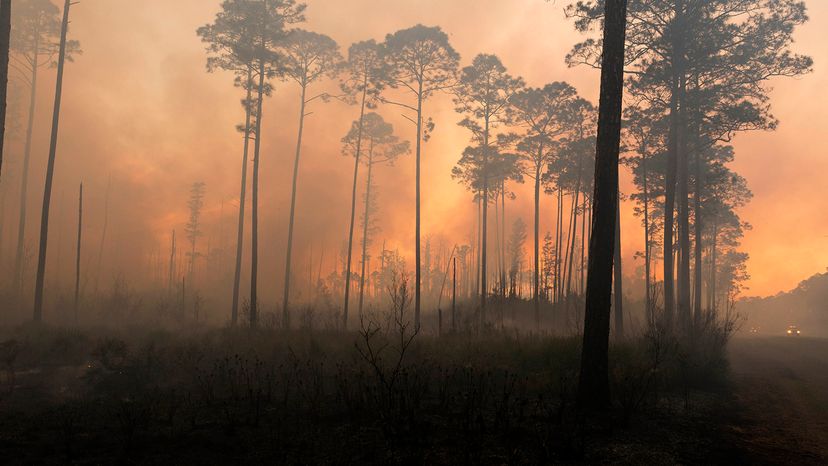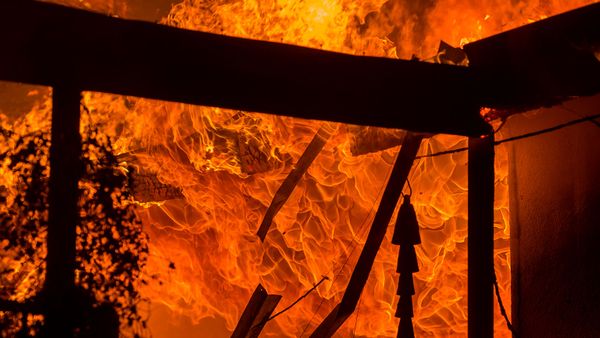Pressure from above slowly drives peat deeper into the Earth, where it eventually becomes coal. And like that prized mining commodity, peat harbors a lot of trapped carbon from dead life forms. In fact, peat plays host to a third of all the carbon that's stored inside the world's soils. All this carbon renders the substance highly flammable. Even damp peat makes for good kindling when water makes up less than 55 percent of its total weight.
A spark at the surface might be all that's required to ignite the peat under a swamp or forest. Whereas living trees burst into licks of orange flame, peat catches fire in a less dramatic way: It smolders like a lit cigarette. Once they get started, peat fires move at a gradual pace, creeping along through the substrate. The slow burns have been known to last for years before getting extinguished. They can also reach the surface, setting some trees or bushes ablaze. It's not unheard-of for a peat fire to do exactly that and then retreat back underground, only to reappear later on. In 2014, seven Canadian peat fires caused surface-level damage and then went under before they resurfaced the following year.
Fires liberate the trapped carbon, sending it into the atmosphere in the form of carbon dioxide. This has the unfortunate effect of triggering longer dry seasons in places where peat bogs naturally occur, making them more likely to ignite. It's a nasty feedback loop — and a big contributor to our climate change problems.
What's more, smoke from these fires aggravates respiratory problems for those who inhale it. A 2015 outbreak of the bog burnings in southeast Asia led to dense, low-lying clouds of haze. We don't know how many deaths this caused, but one team of researchers came up with a tentative figure of 100,300 fatalities distributed between Indonesia, Malaysia and Singapore.
Fighting back isn't easy. Sometimes, you can smother a peatland fire by pumping water into the turf, but this technique requires a huge amount of time, effort and planning. Waiting for them to die of natural causes is an exercise in frustration. As we've established, it can take a months or years for one of these fires to burn through its fuel supply. Intense rainstorms have been known to put them out, but if the peat gets struck by lightning, that can make it smolder again.
Alas, a wildland firefighter's job is never done.


